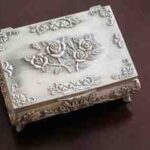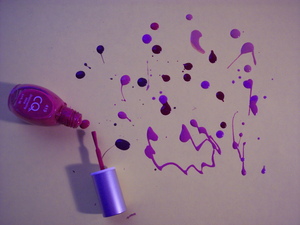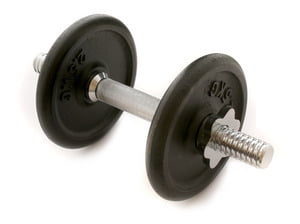Has your favorite silver keepsake become dulled by tarnish? Do you want to restore that like-new shine and luster? What can you do?
You could grab a cloth and some silver polish and rub and rinse, rub and rinse, rub and rinse … (you get the picture). Not only is this a bit tedious, but polishes that you might use generally contain abrasives that remove small quantities of silver from the surface with every rub. Just take a look at the rubbing cloth after a silver cleaning. That black stain on the cloth contains silver. For sterling silver pieces, that may not be a big problem, but over-polishing silver plated pieces can eventually wear through the layer of plating and ruin the piece.
There is an alternative. This short article will show you how you can remove the tarnish using common household items without all the “elbow grease” and without wearing away any silver.
Not to get to technical, but a tarnish is primarily results from the silver reacting with sulfur compounds in the atmosphere to form silver sulfide (sulfur gets into the atmosphere from the combustion of fossil fuels). So, to remove the tarnish, the trick is to chemically remove the sulfur and only the sulfur from the silver. Fortunately, this can be done using items you probably already have in your kitchen: a pan, aluminum foil, baking soda, salt, water, and a stove.
To remove the tarnish, use a pan in which the silver piece to be cleaned can be completely immersed (I have a large old “junk” stainless steel pan I save just for doing this). Line the bottom of the pan with aluminum foil or insert a disposable aluminum pie plate into the pan. Fill the pan with water adding a pinch of salt per quart of water and bring to a boil. Once boiling, remove the pan and place it on a safe surface. Add four tablespoons of baking soda per quart of water to the pan and stir. Once the baking soda is completely dissolved, carefully (remember, the water is boiling hot) place the silver item to be cleaned into the pan making sure that the item is in contact with the aluminum. You should immediately begin to see a reaction. Small bubbles of gas will form and rise around the silver piece (because of this, it is best to do this only in a well ventilated area).
After it appears that the reaction has stopped or the water has cooled, carefully remove the silver piece and rinse it. You should notice a significant change. Most, if not all, of the tarnish is gone and the shine is back. Although once through this process has worked each time I have used it, for heavily tarnished pieces you may need to repeat this process from start-to-finish. Each time you will see less and less tarnish. The tarnish will be gone, but not any of the silver.
One thing to note is that this process will remove ALL the tarnish. Even the tarnish in crevices that polishing generally does not get to. If you have a piece where the contrasting dark in the crevices adds to the appeal or beauty of the piece, you wouldn’t want to use this method on that piece.
Again, not to get too technical, but this process works due to the relative nature of silver and aluminum. Sulfur “prefers” to combine with aluminum instead of silver (no accounting for taste). The salt and baking soda work together to create an environment that allows the sulfur to leave the silver and combine with the aluminum. The heat just makes this take place faster.
I’ve used this process many times with no problems. However, so that you understand this process and prove to yourself how well it works, you might want to try it start-to-finish on one silver item that you are not overly concerned about. After that, you’ll want to use it on all of your silver items.






